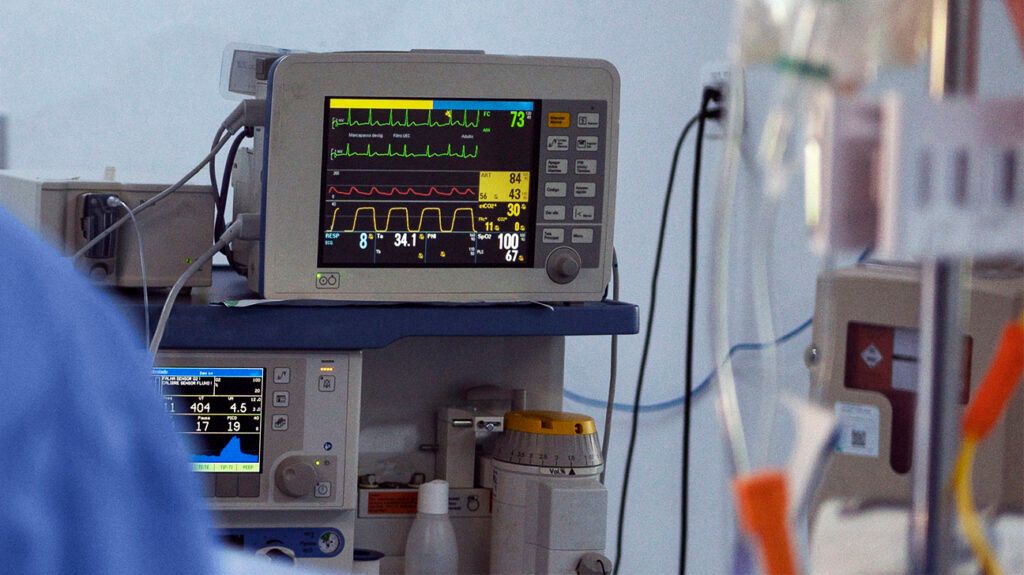Several studies have demonstrated that shock therapy is an effective treatment for improving depression symptoms.
Shock therapy, medically known as electroconvulsive therapy (ECT), is a treatment for severe depression and other mental illnesses when medications and therapy are ineffective. It involves applying small electrical currents to the brain under general anesthesia to induce a brief, controlled seizure, which alters brain chemistry, easing depression symptoms.
While shock therapy is generally a safe and effective treatment for depression, people undergoing ECT may experience some side effects.

Shock therapy is a medical procedure for treating certain mental health conditions, including depression. ECT is highly effective in treating severe depression, with
During ECT, healthcare professionals place small electrodes on the scalp and deliver mild electrical currents to the brain, inducing a controlled seizure that temporarily alters brain activity. The procedure is painless and occurs while a person is under general anesthesia, making them unaware during the session.
Decades of research confirm its efficacy, with studies showing it outperforms alternatives such as ketamine in improving depressive symptoms.
Doctors do not currently fully understand the exact mechanisms of shock therapy on depression. However, some believe ECT affects neurotransmitters, hormones, brain structure, and cell regeneration, contributing to an improvement in depression.
Learn more about ECT.
During shock therapy, the doctor will send measured, controlled electric impulses to the brain, eventually inducing a small seizure.
This seizure activity triggers significant changes within the brain. These include:
- alterations in the levels of neurotransmitters
- improved communication between different brain regions
- an enhancement of the brain’s ability to reorganize itself, known as neuroplasticity
These changes in the brain can help enhance its function and reduce the imbalance in neurotransmitter levels, improving depression and its symptoms. ECT may involve two or three weekly sessions for 6 to 12 treatments. The number of treatments depends on symptom severity and response to therapy.
The primary goal of depression treatment is to reduce symptoms and improve day-to-day functioning. More common depression treatment options, such as therapy and medication,
Research indicates that the effects of ECT can persist for several years. However, outcomes vary according to factors such as the type of ECT, the number of sessions, and individual circumstances.
People may experience some side effects after undergoing shock therapy, including:
- confusion
- memory changes
- amnesia
- nausea
- fatigue
- dry mouth
- headache
- muscle aches
Most of these mild symptoms typically resolve within a few hours after treatment. However, memory changes, including short-term or long-term memory loss, can sometimes persist for several months.
Rare but serious side effects include prolonged seizures or complications from anesthesia or medications involved during the procedure. While extremely uncommon, there is a minimal risk of death relating to ECT.
During shock therapy, healthcare professionals place a person under general anesthesia and administer a muscle relaxant to help ensure safety and prevent injury. They will also continuously monitor vital signs such as heart rate, blood pressure, and brain activity throughout the procedure.
The procedure involves attaching small electrodes to the person’s scalp, either on one or both sides of the head, depending on the technique. A carefully measured electrical current travels to the brain through these electrodes, inducing a brief, controlled seizure that typically lasts
Like a minor surgery, once the procedure is complete, the individual awakens as the effect of anesthesia wears off. This usually takes 5 to 10 minutes.
Following the procedure, the individual rests in a recovery room where they undergo close monitoring until their breathing, pulse, and blood pressure return to expected levels. A person may feel groggy and experience side effects of ECT and anesthesia.
Driving restrictions are in place after each ECT treatment. It is crucial to avoid driving, riding a bicycle, or operating heavy machinery for at least 48 hours. Medical professionals will provide guidance on when it is safe to resume driving.
After a person completes their treatment course, doctors usually prescribe medications to maintain the improvements relating to treatment.
In some cases, ongoing shock therapy helps prevent relapse, especially after previous symptom recurrence. This approach, called maintenance ECT, occurs less frequently, such as every 2 to 4 weeks.
Doctors may also recommend cognitive behavioral therapy (CBT) and counseling to address underlying causes of depression and provide tools for staying well. Exercising regularly, eating a balanced diet, following consistent sleep patterns, and practicing mindfulness and meditation
Shock therapy, or electroconvulsive therapy (ECT), is a highly effective treatment option for depression, especially when other therapies have been unsuccessful.
This medical procedure utilizes electrical stimulation to ease symptoms of depression and is especially effective for treatment-resistant major depressive disorder.

